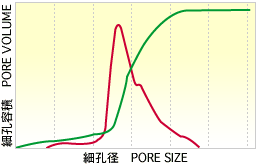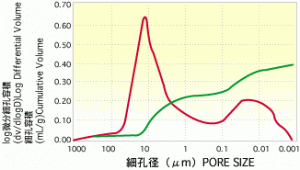ceramics are used as catalyst carriers and filter media in various forms. Catalyst carriers are used in the petrochemicals industry, while filter media are used for water and waste liquid treatment. FOCUS has established technologies for controlling pore size distribution and specific surface areas in a sophisticated manner.
Porous ceramic and catalyst carrier manufacturing processes
Bending→Extrusion→Drying→Firing→Inspection→Shipping
Porous ceramics and catalyst carriers
Catalyst carriers
FOCUS’s technology of controlling small pore size distributions and specific surface areas enables high activity and selectivity to be realized. Based on 10 years of experience, FOCUS meets requirements for partial oxidation catalyst carriers destined for a variety of petrochemical businesses.
<Physical characteristics>
| 8 mm dia. Ring | |
| Apparent porosity | 35-60% |
| Water absorption (%) | 20-40% |
| Bulk specific gravity | 1.5-2.0 |
| Filling density | 0.7-1.0kg/L |
| Crushing strength | 50-150N |
| Specific surface area | 0.1>-2.0m2/g |
<Typical pore size distribution for partial oxidation catalyst carriers>

<Chemical composition>
| (%) | |
| Al2O3 | 80~99 |
| SiO2 | 0.5~20 |
| P2O5 | 0.3> |
| Fe2O3 | 0.2> |
| CaO | 0.2> |
| MgO | 0.1> |
| Na2O | 0.2~0.5 |
| K2O | 1.0> |
Porous ceramics
Provided with a wide range of pore size and large specific areas, porous ceramics developed for filter media use have excellent adsorption characteristics.
Chemical composition
| (%) | |
| C | 0-10 |
| Al2O3 | 30-45 |
| SiO2 | 25-35 |
| P2O5 | 5-10 |
| Fe2O3 | 1-2 |
| CaO | 1-2 |
| MgO | 2-4 |
| Na2O | 1> |
| K2O | 1-2 |
Typical pore size distribution for porous ceramics

welcome inquiry us carrier@catalystcarrier.net
